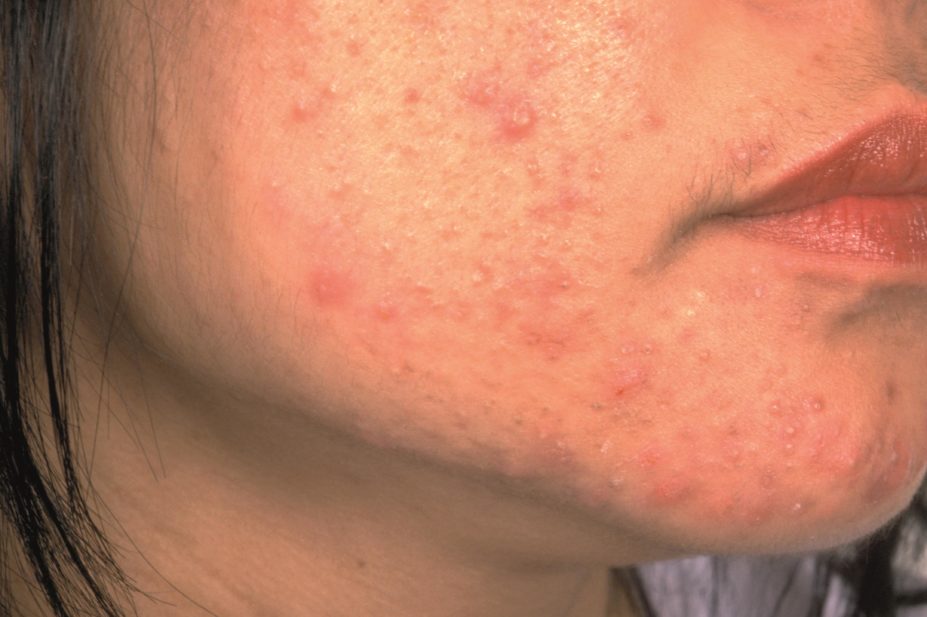
Shutterstock.com
Patients who receive oral isotretinoin for acne do not need to be monitored with monthly blood tests, say the authors of a meta-analysis.
The researchers, who reviewed data from 26 studies involving 1,574 patients, found that while isotretinoin treatment often resulted in significant changes in laboratory values, such as blood counts and lipid levels, these rarely reached abnormal levels.
“The findings of this study suggest that less frequent laboratory monitoring may be safe, with few missed high-risk laboratory changes, for many patients with acne who are receiving typical doses of isotretinoin,” the authors write in JAMA Dermatology
[1]
on 2 December 2015.
“A decrease in the frequency of laboratory monitoring for some patients could help to decrease health care spending and potential anxiety-provoking blood sampling,” they add.
The researchers, led by Joslyn Kirby, a professor of dermatology at the Hershey Medical Center in Pennsylvania, looked at studies of patients aged 9–35 years with acne vulgaris. All studies involved treatment with isotretinoin at doses of at least 40mg (or ≥0.5mg/kg) daily for at least four weeks. Changes in laboratory values were defined according to the National Institutes of Health (NIH) Clinical Center and the Common Terminology Criteria for Adverse Events reference ranges. The mean follow-up period for each test was around 11 weeks (6.5 weeks for hepatic panels).
The team found that while all lab values were adversely affected by isotretinoin, serious effects were rare. For example, with the exception of one study, all observations of total cholesterol levels in all studies were within the reference range. Although mean values increased by 19.7mg/dL at follow-up compared with baseline, the mean value during treatment of 184.7 mg/dL was less than the 240mg/dL threshold defined as significant or high risk by the NIH.
Similarly, triglyceride levels increased by 37mg/dL during follow-up, but the average was 120mg/dL, compared with a high-risk value of 200mg/dL.
The authors also note that total cholesterol and triglycerides didn’t change substantially between 8 and 20 weeks compared with baseline, suggesting that late effects are uncommon.
Meanwhile, lab results from hepatic panels showed mean aspartate aminotransferase (AST), alanine aminotransferase (ALT), and alkaline phosphatase (AP) values of 22.7, 21.8 and 88.4 U/L where thresholds of 108, 111 and 367.5 U/L define a grade two or significant adverse event, respectively.
The analysis also shows that while the mean white blood count dropped by 1,130/μL, the average of 6,890/μL was still above the high-risk threshold of 3,000/μL.
In the United States, the isotretinoin product information recommends baseline fasting lipid and liver testing at weekly or bi-weekly intervals until the patient’s response has been established. Therefore, the manufacturer’s advice conflicts with a number of studies that have shown less frequent monitoring to be sufficient.
But in the UK, isotretinoin product information recommends monitoring liver enzymes and fasting serum lipids at baseline one month into treatment and at three-monthly intervals thereafter. Regular monitoring is only recommended if clinically indicated. The British Association of Dermatologists guidelines, published in 2010 and backed by the National Institute for Health and Care Excellence, recommend similar timescales, noting that there are “data suggesting that routine screening tests during treatment are not worthwhile”.
Anjali Mahto, consultant dermatologist and spokesperson for the British Skin Foundation, said that while the results suggest that monthly monitoring may not be needed, “clinical judgement by the prescribing doctor is obviously necessary”.
“The study authors also concede there are some limitations in this paper where full patient data were not available to draw definitive conclusions,” she adds. “Further studies are required to establish which patients may be at higher risk of blood test abnormalities and stratify them accordingly.”
References
[1] Lee YH, Scharnitz TP, Muscat J et al. Laboratory monitoring during isotretinoin therapy for acne: a systematic review and meta-analysis. JAMA Dermatology 2015. doi:10.1001/jamadermatol.2015.3091.
You may also be interested in

Once-a-day suncreams may not offer long-lasting protection

Medicines shortages and slow approvals put ‘significant burden’ on pharmacists, says report
